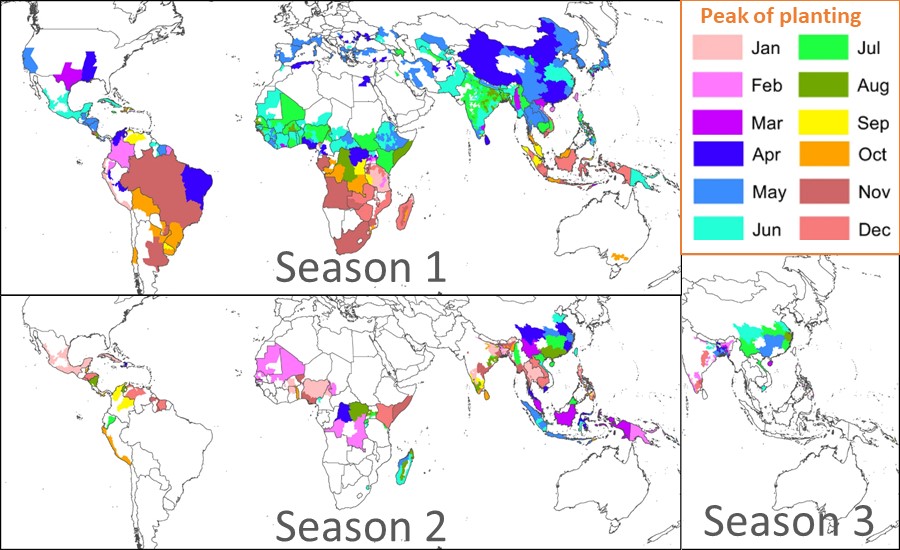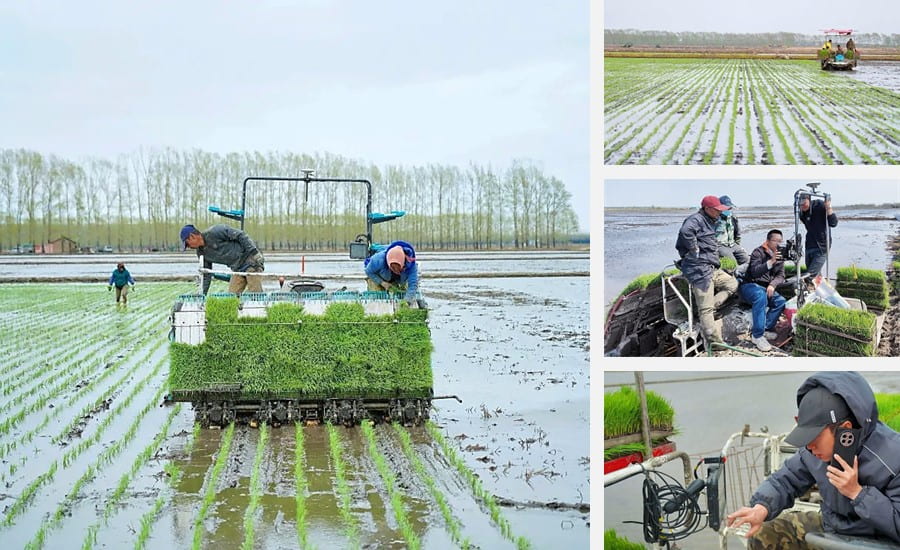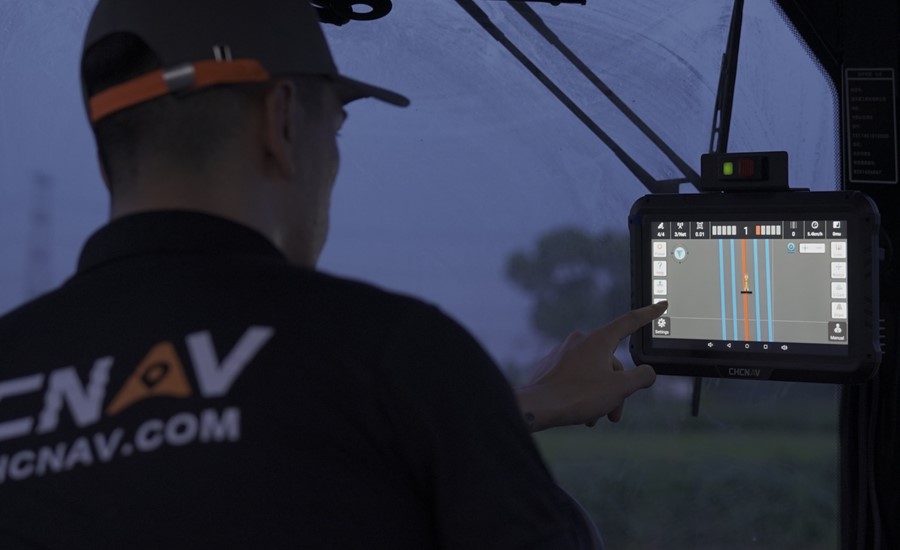Rice is currently the leading staple food for half the world's population, with the highest consumption rates in regions such as South America, sub-Saharan Africa, and Asia. In this context, China is consistently ranked among the top 10 rice-producing countries from 2017 to 2022, characterized by its ability to cultivate it during the two to three rice-growing seasons per year.

Figure 1. Spatial units covered in RiceAtlas and the number of rice-growing seasons.

Figure 2. Peak rice planting month by season.
(Source for figures 1,2: RiceAtlas, a spatial database of global rice calendars and production, published in the Nature portfolio, the leading international weekly journal of science with correspondence to Alice G. Laborte).
WHAT ARE THE COMMON CHALLENGES ENCOUNTERED BY RICE FARMERS?
Rice farmers around the world face a number of common challenges, including resource depletion due to soil degradation, urbanization, the effects of climate change, and a shrinking labor force, especially skilled labor.
In China, as in many other countries, every rice planting season is a race against time and an effort to optimize efficiency. As farms strive to utilize every inch of arable land, they are faced with a need to execute precise, straight-line planting operations to accurately align the new rice crop with previously established rows of seedlings. The importance of this precision cannot be overstated, as any initial inaccuracy can result in reduced rice yields, an especially critical concern in a country where rice land availability is limited to just 0.02 hectares per capita. In tandem with the drive to increase productivity per hectare, there is a growing need to ensure that food production achieves sustainability, security, and minimal environmental impact.
Solutions in this area include the use of innovative equipment that not only increases crop yields but also mitigates adverse environmental impacts.
WHAT PRECISION FARMING SOLUTIONS ARE AVAILABLE TO RICE FARMERS?
CHCNAV offers a range of precision farming technologies, one of which is the NX510 autosteering system based on the Global Navigation Satellite System (GNSS). This advanced technology delivers significant productivity gains at a cost accessible to nearly every farm, making it suitable for retrofitting old and new farm vehicles. These precision tools go a long way toward increasing farm output while minimizing waste.

Figure 3. The rice transplanters with the installed CHCNAV’s autosteering system, China.
In a recent application, CHCNAV's NX510 automated steering system has been successfully integrated into rice transplanters used to plant rice seedlings in swampy soils in China. With an impressive pass-to-pass accuracy of ±2.5 cm, this system provided impeccable row spacing control. It ensured that seedlings were planted at consistent depths and in the correct vertical and horizontal positions, promoting adequate ventilation and optimal light exposure for the subsequent growth of rice seedlings. The operation was simplified for the farmer, who only had to set the working path in advance.

Figure 4. Rice fields after planting with the CHCNAV NX510 automated steering system in China.
ARE AUTOSTEERING SYSTEMS EASY TO INSTALL ON DIFFERENT TYPES OF TRACTORS?
Installing the NX510 is a hassle-free process, allowing farmers to make the most of their time in the field without undue delays. This state-of-the-art system is equipped with advanced built-in connectivity modules, including a 4G modem and an additional UHF radio modem. These features allow farmers to seamlessly connect to their preferred RTK correction sources, whether from local RTK networks or GNSS RTK base stations. In addition, the NX510's adaptability allows it to be easily moved from one farm vehicle to another, providing unparalleled flexibility.
The guidance controller with the full GNSS constellations delivers enhanced accuracy for optimal navigation reliability. The NX510 autosteering system extends its capabilities beyond automated planting to include automated plowing, fertilizing, and harvesting with minimal operator intervention.
In addition, the NX510 Autosteering System maintains the same high level of accuracy when operating at night. This feature is invaluable to farmers who must work in low or no light conditions, either to escape the oppressive heat of the day or to meet tight schedules and complete tasks on time. Whether it's staying ahead of adverse weather conditions or catching up on work, the NX510 ensures that farmers can effectively manage their operations, even during night shifts.

Figure 5. Field operation at night with the CHCNAV NX510.
Throughout the rice planting season, CHCNAV has been a steadfast ally to farmers, helping thousands of users worldwide achieve optimal harvests year after year.
___
About CHCNAV
CHC Navigation (CHCNAV) creates innovative GNSS navigation and positioning solutions to make customers' work more efficient. CHCNAV products and solutions cover multiple industries such as geospatial, construction, agriculture and marine. With a presence across the globe, distributors in more than 120 countries and more than 1,700 employees, today CHC Navigation is recognized as one of the fastest-growing companies in geomatics technologies.







